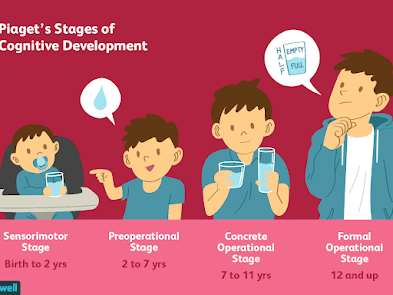Child Development Theory That Can Help You Better Care for Children
Have you ever wondered what motivates children to think and act? Our understanding of human nature and child development is progressive but all children are different, and no one has all the answers. However, a few well-known theories may provide useful information on early childhood development that will help you to better care for children.
During our first years of friendship from childhood, we develop the foundation of our intellect, personality, social behavior, and ability to learn. The four theories should be reviewed and include attachments, cohabitation, psychological development, and social and cultural theory.
1. Attachment theory (Bowlby): This theory focuses on strong emotional and physical bonds that create a sense of security in the child. Bonds are established with caregivers who are available and respond to the needs of the baby. Thus, the baby knows that the caregiver is trustworthy, creating a secure environment for the baby to explore the environment.
Example: Six-month-old Jordan loves baby toys and socializing. Convinced that crying brings relief, Jordan responds to anyone and gets annoyed when someone stops contacting him.
2. Psychosocial Development Theory (Erikson): In this view, social development occurs in stages based on changing points in a person's life including hope (birth to 2 years), will (2-4 years), purpose (4 years) -5), ability (5-12 years old), honesty (13-19 years old), love (20-39 years old), caring (40-64 years old), and wisdom (65 years old) +).
Example: Two-year-old Jennifer recently started barking and saying "no" when her Nanny tried to protect her from her car seat. Jennifer has begun to develop a sense of self-worth, separated from her caregivers. Her nanny should consistently define limits and follow Jennifer, to keep her free from any and all harm while riding in the vehicle. The nanny can increase Jennifer's willingness to obey by giving her some credit and letting Jennifer choose a special toy that she will hold whenever she gets in her car seat without opposition. Choosing her wardrobe will also help Jennifer gain more freedom.
3. Brain Development theory (Piaget): This theory is based on a four-stage model that describes how the brain works for new information. The categories are sensorimotor (birth to 2 years), preoperational (2-7 years), concrete performance (7-11 years), and formal performance (12+ years).
Example: Five-year-old Zachary is self-centered and tries to see others' points of view but begins to think figuratively and to use words to represent things. Zachary loves to read and lays the foundation for language. As in this phase, caregivers should continue to read books daily, encourage playfulness, and share logical thinking. Explaining that it is winter is like grandma's house and so, a coat is needed to help Zachary, who lives in Texas, understand why the coat is packed in a suitcase.
4. Sociocultural Theory (Vygotsky): This development theory is based on the interaction of children with tools and other people in their environment. Society, culture, and collaboration are key to a child's development and learning.
Example: Seven-year-old Alex is trying hard to solve a jigsaw puzzle. Through cooperation with a grown-up, Alex figures out how to isolate edge pieces, collect a boundary, and orchestrate inside pieces by shading or plan. By working with an adult, Alex develops skills that can be used in future jigsaw puzzles.
There are other theories of childhood that can help parents and other caregivers by teaching them how to spend quality time with their child, strengthening positive skills, monitoring behavior and setting boundaries, and minimizing the use of harsh discipline. These vital nursing skills help children develop good social skills, self-control, and other skills that they need to succeed at school and at home.










